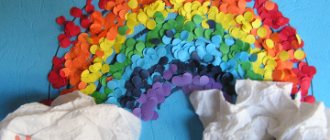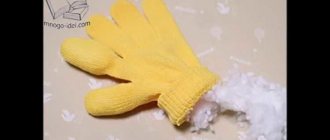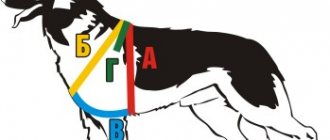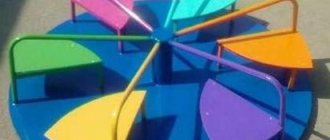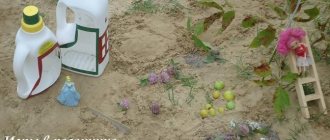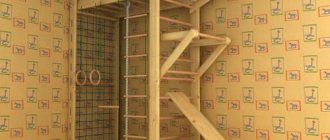Decorating your home for Halloween can be quite a task, and you may have to sacrifice the style of your favorite apartment for store-bought items. Chinese trinkets fill your space so unsightly and can overwhelm you with the abundance of black and orange colors.
This year, skip the store-bought souvenirs and make your own Halloween decorations. Not only is it fun, but you'll also save money!
So put aside the huge artificial white clouds of “spider” webs, hanging which you can hardly wash your hands later! We will teach you how to quickly and easily make a web from threads that are lying around your house. And if there are no threads, you can unravel an old sweater and sock.
- Yarn (threads from any material, all kinds of colors)
- Scissors (ordinary stationery, for cutting or even manicure)
- Tape (use tape that won't damage your wallpaper and can be easily removed, such as masking tape)
Tools for thread web
Operating procedure:
- To start, cut 3-4 long strands (or more) and secure them to the wall with tape (or nail them to the wall). Place them so that they all intersect in the middle.
- Secure all the long pieces of thread in the middle with a small piece of yarn and tie them together. It is advisable to cut off unnecessary long ends.
Scheme and procedure for collecting webs from threads
- Then take a long piece of yarn and begin to gradually form a web. Tie one end of the yarn to one of the long pieces of thread and do the same with each of the long pieces.
How to properly fasten and “tie” knots on a web
- On each long strand, tie a large piece of thread to the strand (using a simple knot).
- Continue moving from one long strand to the next, twisting and tying, until you gradually reach the very first strand you started with.
Trim any excess yarn ends. Each knot should be sliding so that you can easily move it up or down the thread.
The easiest way to secure it to the wall is with masking tape.
Repeat this step, using increasingly longer pieces of thread to form increasingly larger rings on your web. You can make these rings at a very short distance from each other, or, conversely, further away - it all depends on your mood and aesthetic need.
Only when you have finished weaving all the rings on the web will your spider web be ready!
Select the size and shape of your future web in accordance with the features of your wall, the location of bookshelves or windows.
You can weave a web, combining a variety of colors and sizes - compact white or huge black.
To further lift your spirits, you can weave a web from some bright, juicy threads! Don't forget to add small faux spiders to enhance the spooky effect!
Master class: Spider web from a bag
If there are no threads in the house, then there will always be garbage bags. They make great decor. Fold the bag into a triangle and draw cutting lines with white chalk, as shown in the diagram. We cut it out and that’s it - the web is ready. Cheap and fast.
Scheme for cutting cobwebs from a bag
We fasten the bag with tape on the sides so that it does not slip and cut along the contour with sharp scissors
The original web is ready - you can attach it to the wall using masking tape.
WikiHow carefully monitors the work of its editors to ensure that every article meets our high quality standards.
A spider's web can be a great room decoration for a holiday like Halloween, a decoration for a horror room, an addition to some school project about spiders, or an item that creates a special atmosphere while reading the book “Charlotte's Web.” There are many different ways to create a decorative web, differing in the degree of complexity and the materials used.
Steps
Yarn web
- Prepare the necessary materials.
Determine the location where you will attach the web and measure it so you know what size to cut the strands of yarn. Remember, the larger the space for the web, the larger the web should be. Any color of yarn will work for you, but more traditional colors would be white or silver.
Cut strands of yarn to create the base of the web.
Cut two strands of yarn: one to create a vertical, the other to create a horizontal; they will connect to each other in the center and form the basis of the web. The length of each thread should depend on where exactly the web will hang, so determine the required thread sizes in accordance with the chosen location.
Add more threads to the base of the web.
Pull an additional thread from the corner of the web base to its center. Do this for all corners. As a result, you will have eight rays of the web (the main threads of the frame).
- Eight beams should be enough, but you can always add more beams later if needed.
- Interlace the warp threads with a spiral twist thread.
Start from the center (where the vertical and horizontal warp threads originally crossed) and braid the warp threads in a spiral. Each time you encounter another warp thread, tie the working thread to it with a knot so that the resulting web holds its shape.
- Leave enough space between adjacent turns of the spiral to create the effect of holes that exist on a real web.
- The threads must be taut so that the web does not sag.
If you run out of working thread, simply tie off the end and then continue weaving with a new thread.
Trim or tie up loose ends of the web arms and generally tidy up the web. The web will be ready when you finish braiding its base with spiral turns of the working thread, reaching the very edge of the base
Add spiders.
Attach store-bought plastic or plush spiders to webs, or make your own from pipe cleaners or similar items.
Chenille wire web
- Take three white or black pieces of chenille wire for each web.
Chenille wire is a plastic wire with fluffy fibers woven into it.
- If you want to experiment, you can try other colors of chenille wire.
Suitable wire sets can be found at craft stores.
Twist two pieces of wire together exactly in the center, forming the letter “X”. Then screw the third element there, thereby forming a snowflake.
- The rays of the web base should be evenly distributed in a circle, leaving equal spaces between them. This will be a kind of frame for your web.
If you have trouble twisting the wire, you can simply glue it together with hot glue.
Secure the end of another piece of chenille wire about an inch from the center point of the base. It will become a working thread for weaving a web in a circle.
Weave the base of the web.
Each time the working thread meets the warp beam, twist or braid it once around the beam to secure it in place.
- Try not to pull the wire too much while working, as this may cause it to lose some of its fibers.
Continue to weave around the base of the web, moving in a spiral. Each time you run out of one piece of chenille wire, simply wind a new one to the last attachment point and weave the web further.
After completing the last turn of the web, trim off the excess ends of the wire with sharp scissors. You can finish the design of the web in two different ways, which are listed below.
- Leaving the small tips of the rays of the web's base sticking out will give it the jagged look often used in cartoons to depict spider webs.
Use a working weaving thread to create a smooth outer edge of the web. This will give it a finished appearance, as if a very neat spider had worked there.
Web of knitted napkins
- Prepare suitable knitted napkins.
Doilies knitted in the round from cotton threads using airy crochet patterns are very reminiscent of cobwebs. If possible, choose napkins that look the most like cobwebs, but don't worry too much about it.
- Napkins can be found in grandma's old things, or purchased at a thrift store or craft store.
If you used old, used napkins, wash them first.
- Paint the napkins with black spray paint (if they are a different color).
Lay the napkin on a flat surface and spray it with black spray paint, going over it a few times to get it completely black. Let the paint dry, then turn the napkin over to the other side and paint too. When finished, hang the napkin to dry.
- Choose a well-ventilated area to work with spray paint, and be sure to cover your work area with cardboard or newspaper to avoid getting paint on the surface you placed the wipes on.
- Attach the napkins to a base in the form of a sheer curtain or large piece of fabric, such as a sheet.
- Place the napkins at some distance from each other to create the impression that different spiders have woven their webs. Sew the napkins or glue them with hot glue. Attach as many napkins as will allow you to ensure that your decorations look beautiful.
- Create the illusion of threads stretching from spider webs.
Tie the end of a black floss thread to one napkin. Stretch it from one napkin to another. Don't go overboard with the number of threads you use, just add a few threads here and there to create the effect of a stretched web.
Hang a curtain (or fabric) with cobwebs.
Use the same floss threads to hang the curtain (or fabric) with the web, as if the spiders themselves had secured the curtain when they were weaving the web. The web fabric should be hung in front of a good light source, such as a window, directly under a ceiling chandelier, or on a backlit screen.
A self-made web of thread can be useful not only for Halloween. It can be used to decorate the room at themed children's events, design the scenery for a play, or when decorating a children's playground.
You can make a similar product from threads in several ways.
Depending on which manufacturing method is chosen, different tools and materials may be required.
- Yarn of the desired shade (in most cases, white or black threads are used) is a mandatory component.
- Scissors.
- PVA glue.
- Masking tape.
- Black paint.
- A piece of plywood.
Advice!
Before starting work, you need to decide on the place where the web should be located. This will help you choose the appropriate method for its manufacture.
What is needed to make a web?
Depending on which manufacturing method is chosen, different tools and materials may be required.
- Yarn of the desired shade (in most cases, white or black threads are used) is a mandatory component.
- Scissors.
- PVA glue.
- Masking tape.
- Black paint.
- A piece of plywood.
Before starting work, you need to decide on the place where the web should be located. This will help you choose the appropriate method for its manufacture.
Three ways to make a web from threads
You can make such a decorative element in various ways. For example, you can use one of the options below.
Method number 1 - on the wall
For the first method you need to prepare:
- yarn of the selected color;
- sharp scissors;
- masking tape.
Execution technique
- It is necessary to cut 3-4 long threads (or more) and fix them on the wall using tape. They should be placed so that the threads intersect in the center
. - Fix all long fragments of thread in the middle
using a small piece of yarn and tie them. It is recommended to trim off the excess. - Then you should take a long piece of yarn and begin gradually forming a web
. To do this, you need to tie one end of the yarn to one of the long pieces of thread attached to the wall. And repeat this action for each long segment. - On each long strand, you need to tie a large piece of thread to the strand, forming a simple knot.
- In this way , you should move from one thread to another, twisting and tying, until you approach the very first strand
with which the process began. Each knot must be made sliding so that it can be moved if necessary.
Advice!
To form large rings on the web, you need to use the longest pieces of thread possible.
You can weave a multi-colored product in this way, using threads of different colors at the same time.
Method number 2 - using glue
For the second method, you need to prepare the following materials:
- white yarn for knitting;
- scissors;
- deep container;
- PVA glue;
- a piece of film or a plastic board.
Execution technique
- The yarn must be cut into pieces of the desired length
. - Pour glue into the prepared container and dilute it a little with water. Pieces of yarn need to be dipped in glue and wait a little so that they can be fully saturated with it.
- Now we need to form a web. To do this, you need to lay out the threads in the shape of a snowflake on the film or on a board, and then lay out circles on top of it.
- Then you need to carefully form bends with your fingers and leave the product until completely dry.
- This process can be speeded up a little by placing the web on the battery
. - When the product has dried, it must be carefully separated from the board or film.
The web is ready.
Method number 3 - on plywood
Required tools and materials:
- thin rope or black knitting yarn;
- a piece of plywood;
- hammer and nails with wide heads;
- black paint.
Execution technique
- Determine where the center of the web should be on a piece of plywood. Drive a nail into this place.
- Next, you need to drive the nails in a circle, almost along the very edge.
- Form the axes of the web by stretching double threads between the middle and the nails driven in along the edge.
- Having retreated 10 cm from the middle, drive a nail around the entire circumference near each resulting beam.
- You need to pull the thread around the nails driven in this way.
- Form 2 more such circles so that there are 3 of them in total. You can make more if the size of the plywood allows.
- Shiny nail heads should be painted over with black paint.
The web is ready.
Halloween is coming and you want to make a spider web, but don't know how? Then we will help you!
We offer you 2 options for Halloween webs:
You can make such a web in just 20-30 minutes (depending on the size), and the effect it will create is colossal. Guests at your party will always look warily at the web (especially if you add a spider there too)
